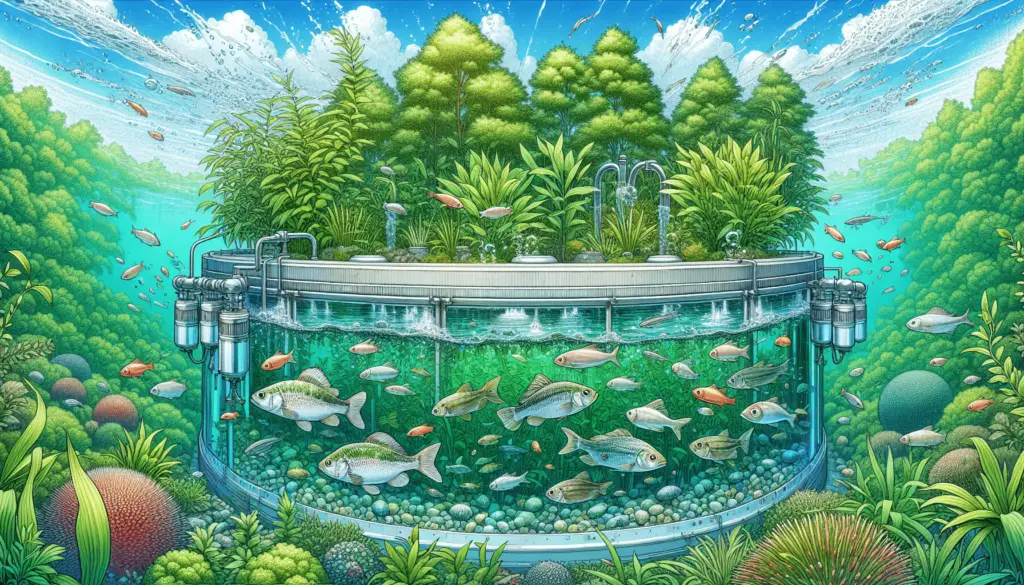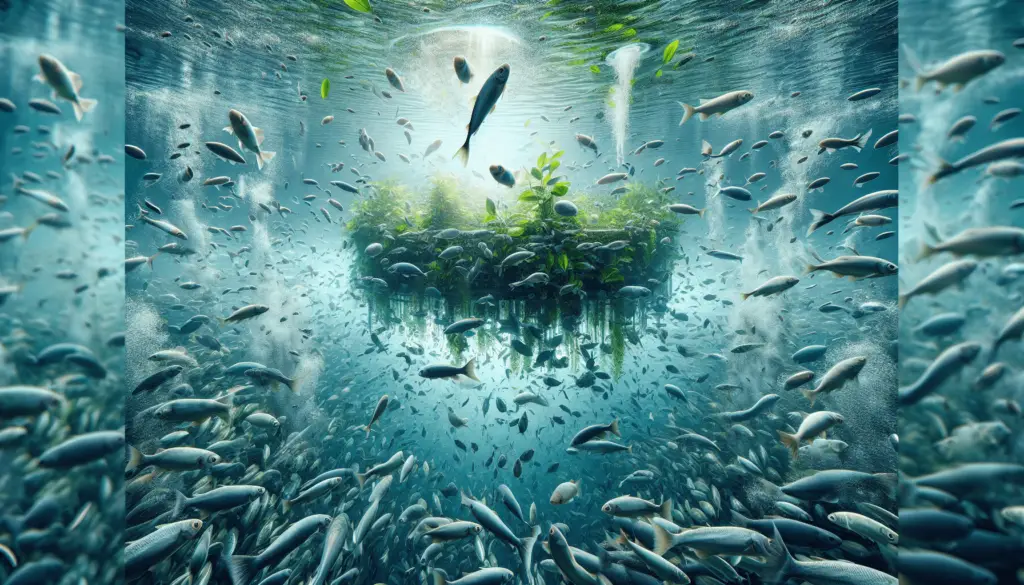Upgrading Your Prepping Game: Building A Self-Sustaining Aquaculture System
Are you looking to take your prepping game to the next level? Building a self-sustaining aquaculture system might just be the answer. In this guide, we will walk you through the steps to create your own self-sustaining aquaculture system that will provide you with a renewable source of food in any situation.
Understanding Aquaculture: What Is It and How Does It Work?
Aquaculture refers to the farming of aquatic organisms such as fish, crustaceans, molluscs, and aquatic plants. Instead of relying on natural sources like oceans and rivers, aquaculture systems are created to provide a controlled environment for the growth and development of these organisms. By understanding the basics of aquaculture, you can build a sustainable system that meets your needs.
How Does Aquaculture Benefit Preppers?
Aquaculture offers preppers a reliable and sustainable source of fresh food. By cultivating your own fish and plants, you can ensure a steady supply of protein and nutrients even in times of crisis. Additionally, aquaculture allows you to have greater control over the quality and safety of your food supply, giving you peace of mind in uncertain times.
Planning Your Self-Sustaining Aquaculture System
Before you start building your aquaculture system, it is essential to have a solid plan in place. Consider factors such as the size of your system, the types of organisms you want to cultivate, and the location of your setup. By planning ahead, you can avoid potential pitfalls and ensure the success of your aquaculture venture.
Determining Your System Size
One of the first steps in planning your aquaculture system is determining its size. Consider how much space you have available, as well as how many organisms you need to sustain yourself or your family. A larger system will require more resources and maintenance, so be sure to choose a size that fits your needs and capabilities.
Choosing the Right Organisms
Selecting the right organisms for your aquaculture system is crucial to its success. Consider factors such as water temperature, pH levels, and compatibility among species when choosing fish, plants, or other aquatic organisms. Research different species to find ones that are well-suited to your environment and goals.

Building Your Aquaculture System
Now that you have a plan in place, it’s time to start building your self-sustaining aquaculture system. Depending on your goals and resources, there are several types of systems you can choose from, including pond systems, recirculating systems, and aquaponics systems. Each system has its own benefits and challenges, so choose one that aligns with your needs and preferences.
Pond Systems
Pond systems are one of the simplest and most traditional forms of aquaculture. By creating a pond on your property and stocking it with fish and plants, you can create a self-sustaining ecosystem that requires minimal maintenance. Pond systems are ideal for preppers with ample space and access to natural water sources.
Recirculating Systems
Recirculating systems are designed to conserve water and resources by continuously filtering and reusing water within the system. These systems are efficient and produce high yields of fish and plants in a compact space. While recirculating systems require more technical expertise and monitoring, they can be a great option for preppers with limited space.
Aquaponics Systems
Aquaponics systems combine aquaculture and hydroponics to create a closed-loop system that maximizes resource efficiency. In an aquaponics system, fish waste provides nutrients for plants, while the plants filter and clean the water for the fish. These systems are highly productive and sustainable, making them a popular choice for preppers looking for a comprehensive food production system.
Maintaining Your Aquaculture System
Once your aquaculture system is up and running, proper maintenance is essential to ensure its long-term success. Regular monitoring of water quality, feeding schedules, and system components will help you identify and address any issues before they escalate. By staying proactive and attentive, you can enjoy a reliable source of fresh food for years to come.
Monitoring Water Quality
Water quality is critical to the health and growth of your aquatic organisms. Regularly test parameters such as pH, ammonia levels, and oxygen content to ensure a stable environment. Make adjustments as needed to maintain optimal conditions for your fish and plants.
Feeding Your Organisms
Providing your fish, plants, and other organisms with a balanced diet is necessary for their health and productivity. Research the nutritional needs of your chosen species and develop a feeding schedule that meets those requirements. Avoid overfeeding, as it can lead to water quality problems and health issues for your organisms.

Troubleshooting Common Issues
Despite your best efforts, you may encounter challenges and setbacks in your aquaculture system. Being prepared to address common issues such as disease outbreaks, nutrient deficiencies, and equipment failures is essential to maintaining a successful operation. By familiarizing yourself with potential problems and solutions, you can minimize the impact on your system and prevent larger issues from arising.
Dealing with Disease Outbreaks
Disease outbreaks can devastate your aquaculture system if left unchecked. Familiarize yourself with common diseases in aquaculture, such as fin rot and fungal infections, and take preventive measures to minimize the risk of outbreaks. In the event of an outbreak, quarantine affected organisms and seek professional assistance to diagnose and treat the issue.
Addressing Nutrient Deficiencies
Nutrient deficiencies can affect the growth and health of your fish and plants. Monitor the growth and appearance of your organisms regularly to identify signs of deficiencies, such as stunted growth or yellowing leaves. Adjust your feeding and nutrient supplementation practices to correct imbalances and promote healthy development.
Expanding Your Aquaculture System
As you gain experience and confidence in managing your aquaculture system, you may consider expanding or diversifying your setup. Adding new species, increasing the capacity of your system, or incorporating new techniques can enhance the productivity and sustainability of your operation. By continuously learning and adapting, you can create a thriving aquaculture system that meets your evolving needs and goals.
Adding New Species
Introducing new species to your aquaculture system can provide additional benefits and diversity. Research compatible species that complement your existing organisms and ecosystem, taking into account factors such as water requirements, feeding habits, and growth rates. By diversifying your stock, you can increase the resilience and productivity of your system.
Increasing System Capacity
If you find that your current aquaculture system is meeting or exceeding your needs, consider expanding its capacity to produce more food. This may involve increasing the size of your pond, adding additional tanks or grow beds to a recirculating system, or optimizing space and resources in an aquaponics setup. Carefully plan and implement changes to ensure that your system remains balanced and sustainable.
Conclusion
Building a self-sustaining aquaculture system is a rewarding and practical endeavor for preppers looking to secure a renewable source of food. By understanding the fundamentals of aquaculture, planning effectively, and maintaining your system with care, you can create a resilient and productive food production system that will serve you well in any circumstances. With dedication and attention to detail, you can take your prepping game to the next level and enjoy the benefits of a self-sustaining aquaculture system for years to come.
